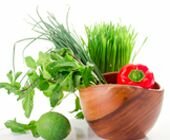

In the U.S., 46 out of 50 states in the U.S. have adopted the Pasteurized Milk Ordinance that was first proposed in 1924 by the United States Public Health Service. This ordinance calls for the pasteurization of milk as a way of killing any potentially disease-causing bacteria in the milk, including campylobacter, escherichia, listeria, salmonella, yersinia, and brucella. Today there are more pasteurization options in the marketplace than there were in 1924, and these options include high-temperature, short time methods, as well as low-temperature, longer time methods. The goal of all methods is the same: to kill potentially pathogenic bacteria that may be present in the milk or milk product (like cheese or yogurt).
| Temperature | Time | Pasteurization Type |
|---|---|---|
| 63°C (145°F)* | 30 minutes | Vat Pasteurization |
| 72°C (161°F)* | 15 seconds | High temperature short time Pasteurization (HTST) |
| 89°C (191°F) | 1.0 second | Ultra Pasteurization (UP) |
| 90°C (194°F) | 0.5 seconds | Ultra Pasteurization (UP) |
| 94°C (201°F) | 0.1 seconds | Ultra Pasteurization (UP) |
| 96°C (204°F | 0.05 seconds | Ultra Pasteurization (UP) |
| 100°C (212°F | 0.01 seconds | Ultra Pasteurization (UP) |
| 138°C (280°F | 2.0 seconds | Ultra-high temperature (UHT) Sterilization |
There's no debate about the effectiveness of pasteurization for killing unwanted bacteria. There's also no doubt that pasteurization gives dairy products a longer shelf life by lowering the presence of bacteria that cause spoilage. But pasteurization also kills desirable bacteria found in fresh milk, and it denatures milk enzymes that may be active in the human digestive tract when fresh milk is consumed. There is little research, however, to determine what nutritional benefits are lost when milk is pasteurized. We've seen speculation about changes in protein structure, calcium, amino acid, and vitamin C bioavailability all being triggered by pasteurization, but we have not seen research that confirms or rejects these occurrences.
In the majority of states, dairy farms are free to produce raw (unpasteurized) milk, as long as they adhere to the conditions and restrictions set out in state law. The safety of unpasteurized milk depends on the quality of the cow's life, including the immediate environment and feeding. It also depends on the quality of handling facilities once the cow has been milked. For these reasons, we recommend a very careful look at any dairy farm's procedures, track record, and publicly available information before becoming a regular consumer of its unpasteurized milk. Because freshness is at a premium, and the product shelf life is greatly shortened (not necessarily bad factors), the dairy is most likely to be in driving distance of your residence and could be visited in person.
In some states, like Indiana, where it is illegal for a local dairy to sell unpasteurized milk, cows from the dairy may be leased in order for consumers to obtain a regular supply of raw milk. In the absence of a very high-quality dairy farm in driving distance from your residence, we recommend purchase of pasteurized milk. Even though it's one step further from natural milk (which we would prefer), the health risks (however small), don't seem like a worthwhile trade-off in exchange for the potential benefits. If a high-quality dairy farm producing certified organic milk in unpasteurized form is available in your area, we would recommend considering this option.
Aged cheeses made from raw milk fall into a somewhat different category than raw milk, since they have a naturally longer shelf life. Some producers of raw milk cheeses still expose their products to a short period of heat treatment (about 15 seconds or so at 150°–160°F), which comes very close to, but falls short of, the pasteurization threshold (shown in the chart above). While the same high-quality production is essential, these heat-treated, yet unpasteurized, products don't need to come from a neighborhood farm, and are options you should consider along with high-quality pasteurized cheeses.
 Sign Up Now and get the first chapter of The World's Healthiest Foods book FREE.
Sign Up Now and get the first chapter of The World's Healthiest Foods book FREE.